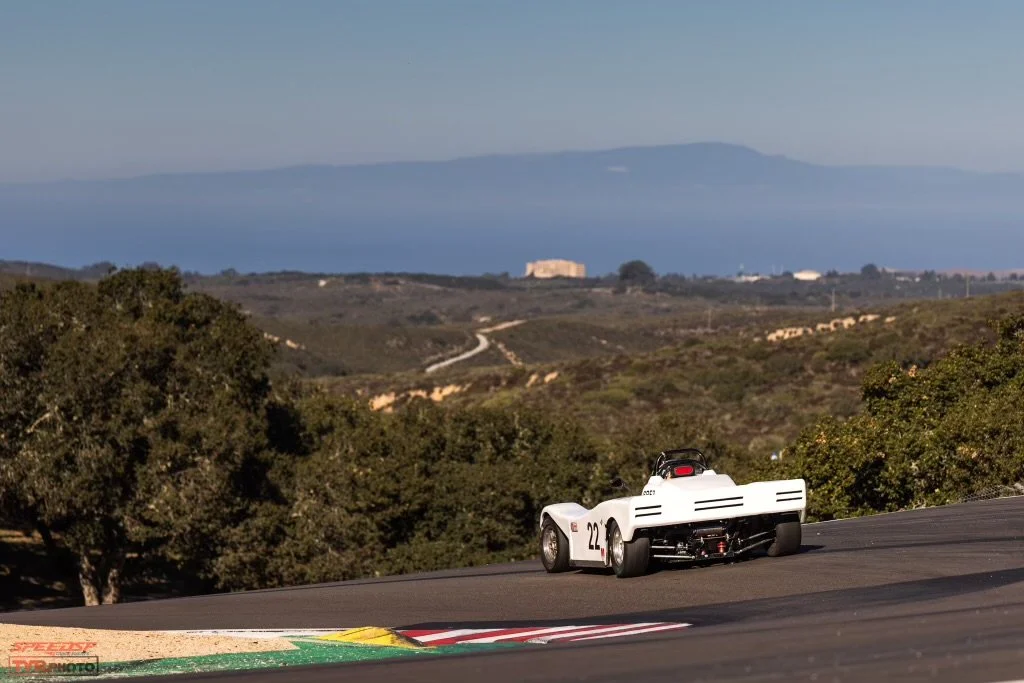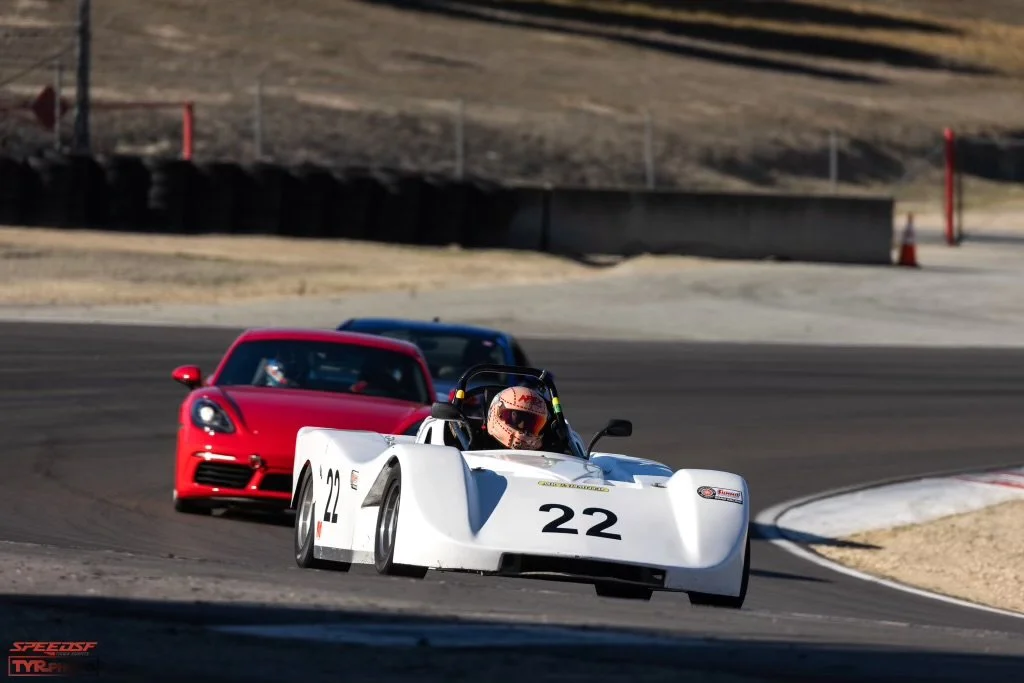Max’s Spec Racer Ford: Lose The Ego
After Max Gokhman signed for his 2006 Cayman, his dealer insisted that he take the car to the track. “You won’t be able to fully appreciate it if you don’t,” he said. Max was hesitant — the thought of balling up his brand new Porsche terrified him, but, at the same time, he sensed the man knew what he was talking about.
Max continued to mull over the prospect of tracking his new toy, but his dealer was adamant — so much so he offered to pay Max’s entry fee. That was all Max needed to make a decision. The next weekend, he took the Cayman to Infineon Raceway and began a love affair that never tested his patience. No crashes, no major repairs, and a relatively straightforward relationship with his parts suppliers made his first few years in grassroots motorsports a breeze.
Soft Ascent
After becoming the 2014 PCA Autocross Class Champion and multiple podium-sitter in various Southern California time attack series, he sold the 987 and moved into a 2014 981 Cayman. This time, however, he wasn’t as eager to modify the car. He’d come to understand the practical shortcomings of a track-oriented car and felt he might get more from the ownership experience if he was to leave the car mostly stock.
It was around then that one of his track buddies enticed him into wheel-to-wheel racing. This would entail buying a race-only machine. Truth be told, he had considered it for some time, but the thought of wadding up a Porsche racing car turned his stomach. Even getting on track in one would be prohibitively expensive, so he explored the cheaper options available to him.
He could drive a Spec Miata for a reasonable price, but he wanted something a little different. “I was looking for a mid-engined, purpose-built platform, and — and this is subjective — something a little more interesting than a Miata,” he explained.
He loved the idea of running a “spec” car: something that encouraged close competition through mechanical parity. What about something with the same power of a Miata, but in a car which weighs one thousand pounds less? The tried-and-true Spec Racer Ford, a staple of grassroots motorsport for the last fifty years, caught his eye. Mid-engine, open-top, closed-wheel, and very cost-effective; there was a lot to like about this diminutive, bare-bones racer.
Barest Bones
The tube-frame chassis has a 1.6-liter engine from a Ford Focus sitting transverse behind the driver. These sealed engines produce 135 horsepower, and are fairly inexpensive to replace when they go bang — though this rarely happens. The emphasis here is on reliability, low running costs, and complete driving immersion.
When Max first tested the car at Laguna Seca, he was setting competitive times by the end of the day.
The sense of occasion is something that can’t be underestimated with an open-top car like this. Not only is the visibility fantastic, but getting your helmet buffeted by the wind makes driving at seventy feel like a hundred and twenty. The information relayed by the car is detailed and constant; it’s easy to feel a locked tire or growing understeer through the steering, which is remarkably sharp. “Feedback is crystal clear,” he adds.
Sitting in the middle of the chassis and knowing exactly where your front wheels are at all times inspires confidence to get real intimate with other racers when going three-wide into a turn - truly what wheel-to-wheel is about.
Some might suspect that a car this visceral and direct would come with sharp edges. In reality, it is predictable and communicative, and, as it has much more grip than power, it’s quite easy to find its limits. When it does slide, it’s fairly progressive — more so than the Cayman; nearly 300 horsepower would cause a few dicey situations when passing in a late-apex turn. Some of this is due to a compliant suspension setup, and some of it is due to the Hoosier slick made specifically for the SRF. Incidentally, it isn’t the most expensive tire. Low weight and low power help lengthen its lifespan, too.
The sequential transmission by Sadev, standard in third-gen SRFs, is another racecar element that Max learned to appreciate. Unlike an H-pattern, which is lovely for canyon drives but saps attention from racecraft; or a PDK, which is clinically precise yet fragile on cars that were built for the street; the SRF gearbox lets you bang out shifts while bouncing off the rev-limiter with abandon.
Perspective Shift
Max admits that, while the Spec Racer Ford is the more engaging car to drive, he doesn’t have the same sentimental attachment to it as he had to his Cayman. “I save the sweet feelings for my Porsche. This is a tool to help me grow as a racer. I compare the distinction between the two to owning a pet versus owning livestock.”
And with the reasonable running costs, packed fields, low power, and full calendars, he’s looking to become a competitive amateur racer as he gets up to speed on the Spec Racer Ford platform, with the help of his team Accel Racetek.
“Once I got competitive with this hobby, I learned that money spent on coaching would make me a lot faster than aero, suspension, or other bits of kit. To me, some of those seem most like things to flex over. With Perry and Travis of Accel Racetek, I not only know that the car will be ready for the next race no matter what tomfoolery I get up to on track, but that they’ll keep nudging me to be a better driver.”
Ultimately, the moral here is that with racing, as with any other passion, dropping your ego — such as by going from a venerable Porsche to a humble Spec Racer Ford — may prove to be the path to success, paved with smiles.






